The customer Journey is increasingly common in our blogs and is extremely important in B2B marketing. But how do you actually create a (good) customer journey?
How often have you lost interest in a product / service?
Imagine, you are orienting online but after a few minutes you click on the cross to never return to that page. This is probably something that happens more often than you count.
But why did you lose interest in the product / service? There obviously went something wrong during this process. In other words: somewhere in the customer journey you chose a different path.
If this happens on the website of your company, it is a big problem. You don’t want your customers to lose interest. You want to give them all the reasons in the world to buy your product.
That is why the Customer Journey is the most important part of the user experience.
It doesn’t matter if you have a great design or the best products in the world ... If the customer journey is not perfect, you will never get (many) customers.
The customer journey looks simple on paper and consists of 3 steps, but in reality the customer journey is more complex. It consists of many small parts that all work together.
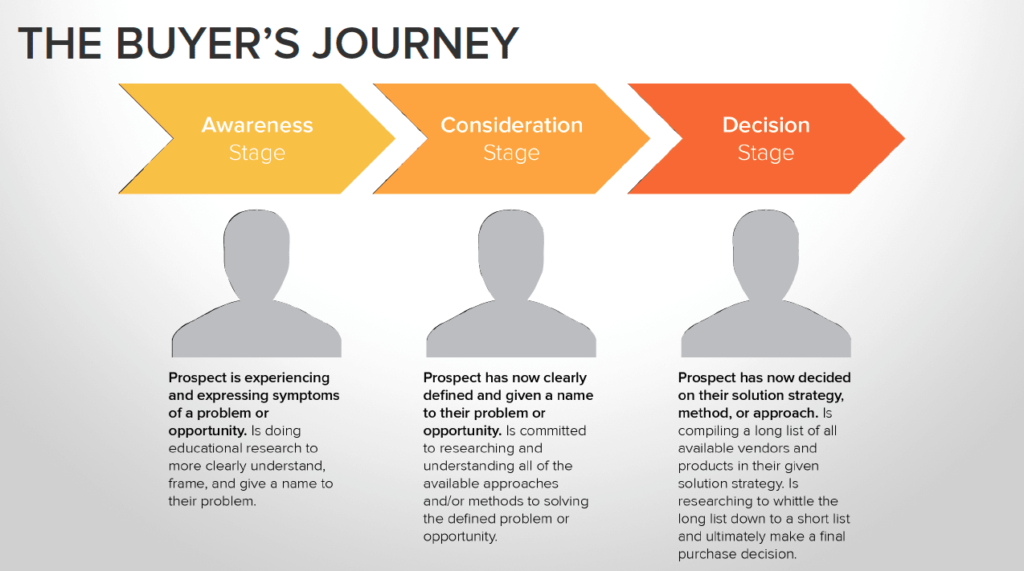
For the best results, you need to know your customer journey better than your customers do. You have to go through the complete timeline and optimize it at every step. Most companies don’t do this. They think that a well-designed website with a good navigation magically creates the perfect customer journey.
But that's not true.
You can only create a good customer journey from scratch, based on analyzes. When you're done, you have a detailed customer journey structure that will optimize your conversions.
Before you create a customer journey, it is important that you understand your customers. To do this you can make specific buyer personas. This way you know exactly who your customers are and what they want.
The more detailed personas you have, the better. This is an example of a buyer persona:
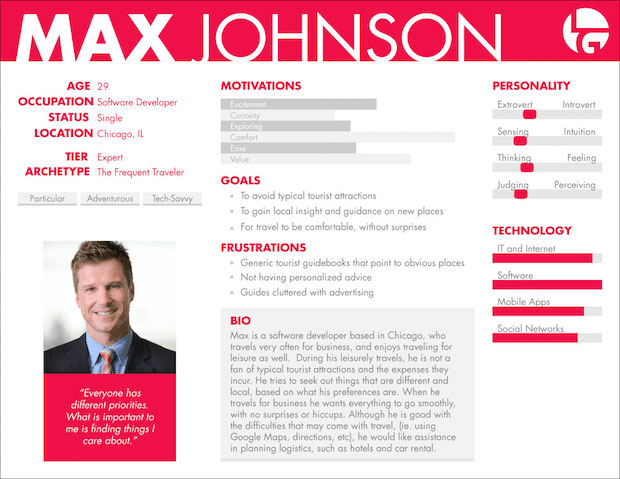
If you see and read this, then you probably have created an image of this person in your mind. Just as with book characters. Right?
That is your goal when you create personas. They have to be as realistic and detailed as possible.
Demographic data
To create a buyers persona you need a lot of data. First take a look at the demographic data, which gives you the biggest view of your target group.
Data such as the average age and income are very important when you fill the buyers persona. Google Analytics is one of the best ways to collect general data about your target audience.
To collect demographic data about your visitors in Google Analytics go to target group → demographic → overview. The chart will show you the age and gender.
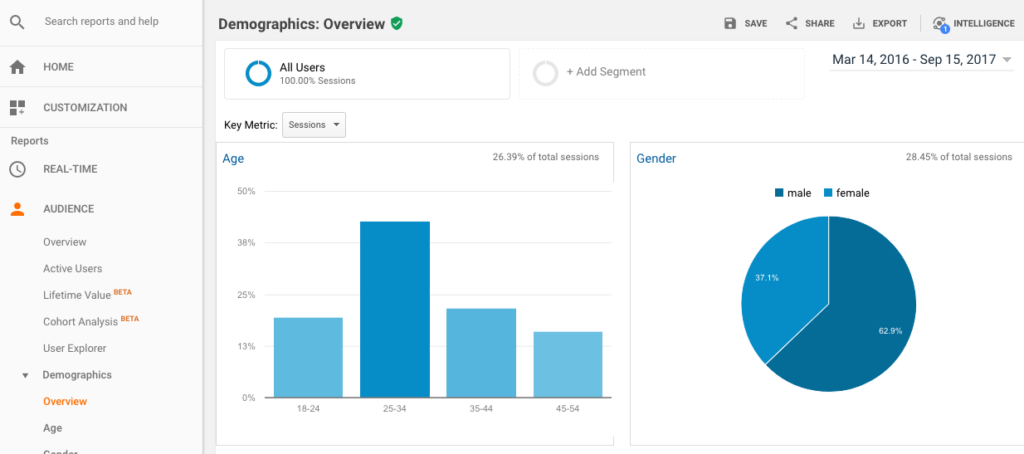
For more demographic data in Analytics you can go to the target audience → geo → location.
There you will find the following:
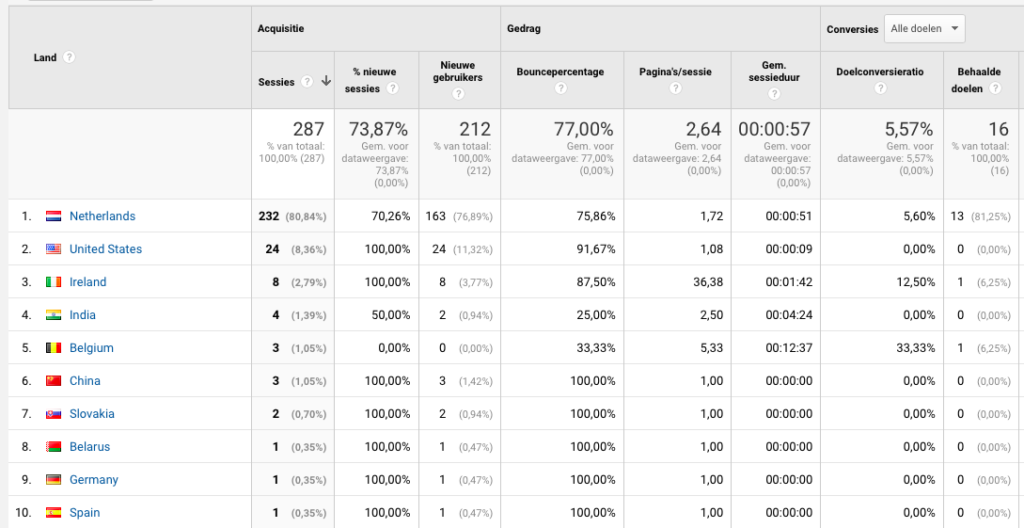
The location is very general, until you make it more specific by selecting a country / place.
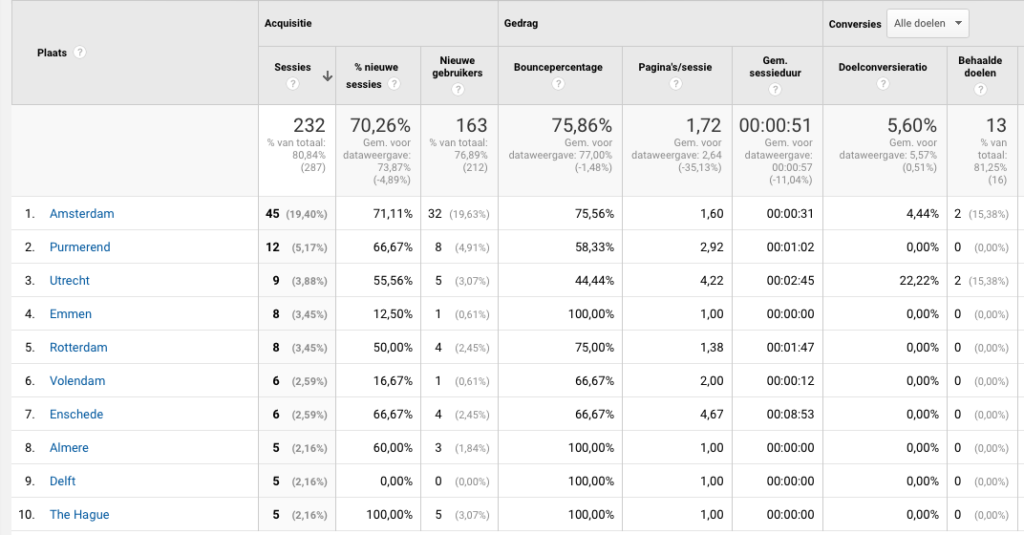
Then you can see the interests of your target group. They tell you who your customers are. In Google Analytics you can see a number of basic interests: target group> interests> overview.
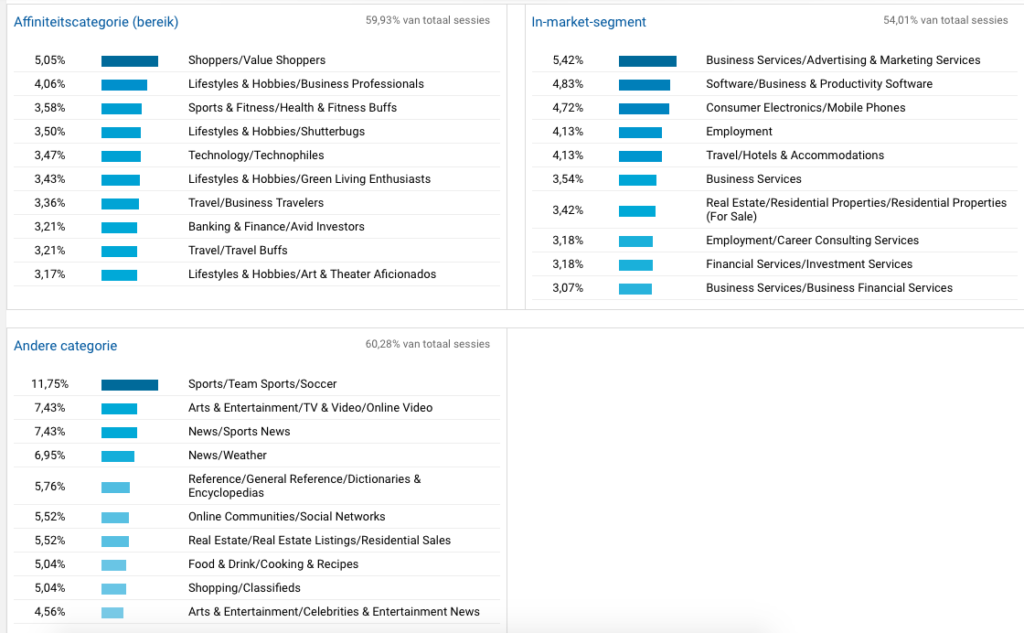
Once you have collected varied information, you can put together a buyer persona. When you have completed that, you can start with the customer journey itself.
A customer journey is not the same for every company. You have to deal with various factors, like marketing strategies and sales funnels. They will affect how your journey looks.
It is important that you divide the customer journey into a few steps. This way you will have a clear overview of what is going on. Most marketers create a customer journey map to have a clear overview.
Before you create this map, you have to answer a few questions:
- How can customers find my company?
- Which channels lead customers to my website?
- How do customers navigate through my website before they buy something? (Which pages do they visit?)
- Which actions do customers take at which phase of the journey.
After you answer these questions you can create a customer journey. Off course more roads lead to Rome, but we still advise you to outline one path at first. You can map the other ways later.
This is an example of how a customer journey map can look like:
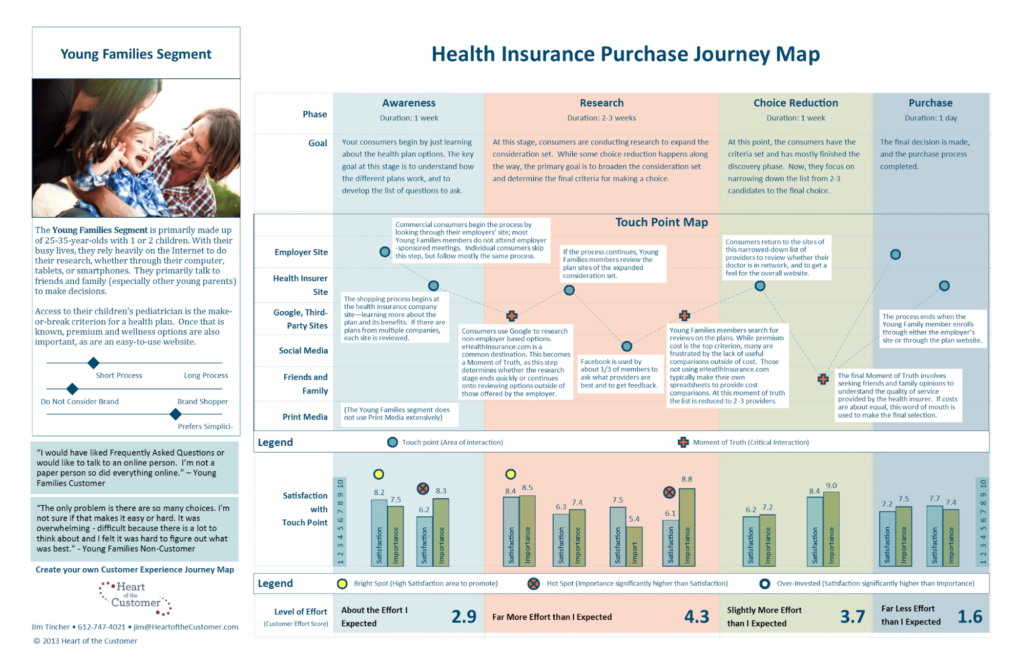
This map has 4 stages:
To find out how many stages your customer journey has, you have to ask yourself how would I walk through this journey? Which steps would I take before I buy the product?
In most cases a customer journey has the following steps, in this order:
- Awareness
- Research
- Choice evaluation
- Purchase / conversion
- After the purchase
Now you have to decide which of these steps apply to your customer journey. Maybe there are additional steps that are not on the list. Add those to your map.
Once you have defined all the steps, you can check what your customers do at every step. These are the contact moments.
For example:
A customer goes to your website and visits your home page and a landing page. The home page and the landing page are both touchpoints.
You have to write down every touchpoint your visitor may have in your customer journey and add this to your map.
In this image you see an example of various touchpoints in a customer journey map.
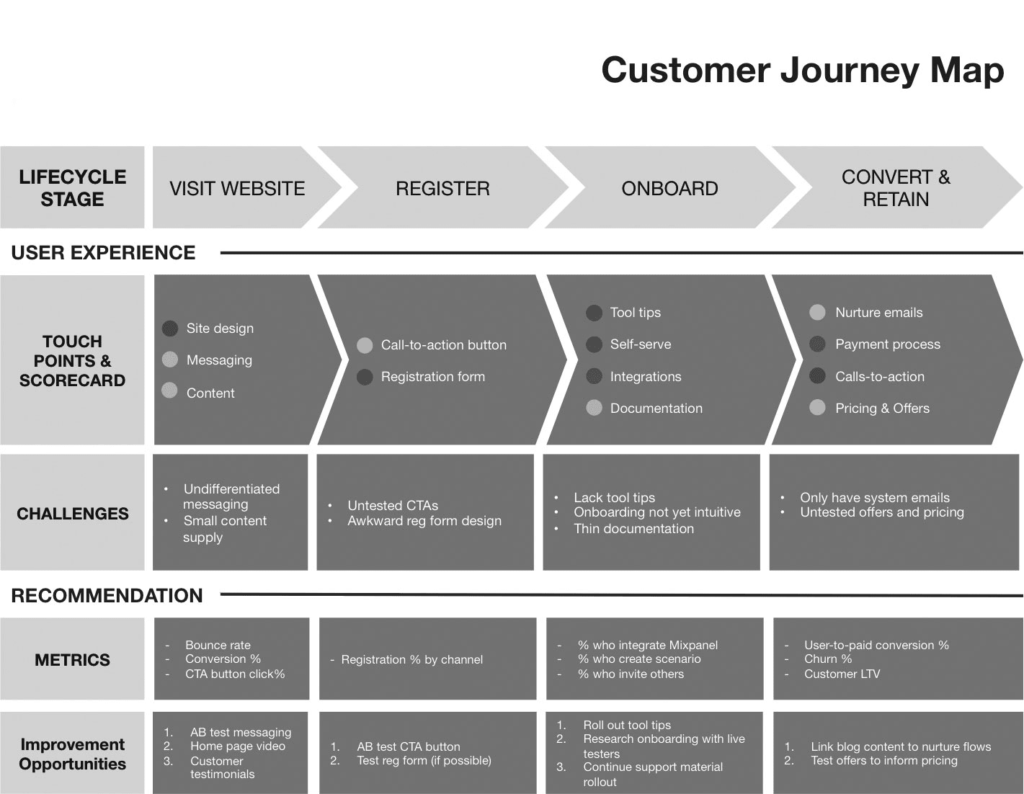
As soon as you know where your visitors navigate to, you can imagine what actions they take on every step. It is up to you to make those actions as simple as possible. If you divide your customer journey into separate actions you will make it easier for your visitors to take those actions.
In the following image you will find an example of a customer journey map with a focus on the actions of the visitors:
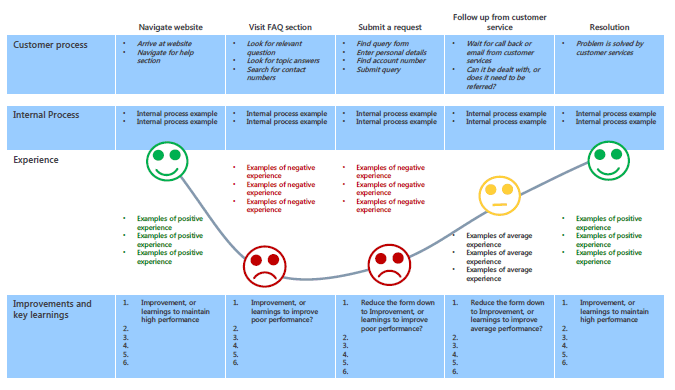
We use this example for a moment. In the second step you see that the visitor goes to the FAQ. He is looking for more detailed information about the services or wants answers to take away his concerns.
If you think your visitors will go the FAQ, you have to add specific questions and answers to take away all the concerns your visitors may have.
During the design phase of your customer you mostly speculate what your visitors will do. But if you make sure you know this, you can provide the best user experience which will increase your conversions.
There is no perfect customer journey, but you can solve the flaws you may find. The best way to prevent that your company loses customers, is to proactive look for weak spots in your customer journey. This way you can solve them as quickly as possible.
In Google Analytics you can find and overview of users behavior on the website. Go to behavior → behavior flow. This behavior flow shows where people navigate to on your website. This is also a good way to collect the touchpoints of your website.
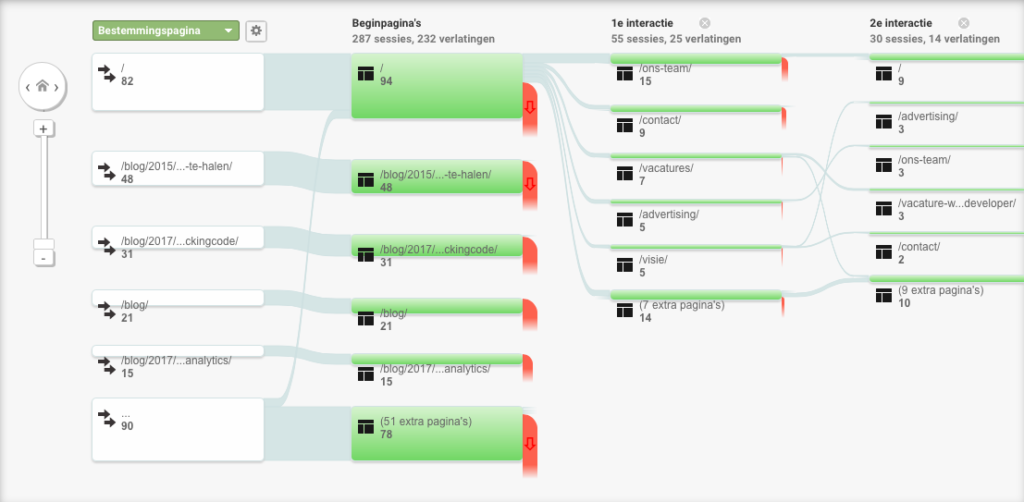
If you hover over the boxes, you will also see how many visitors you have lost on a specific page.
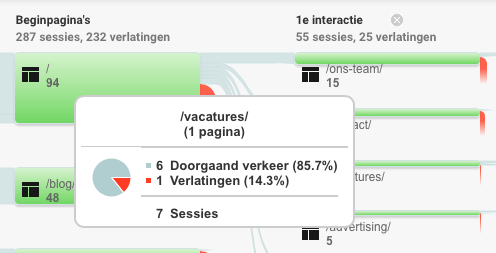
The drop-offs (verlatingen) show how many visitors left the website after that page. If you notice that visitors always drop out on the same page, it is a really good idea to optimize that page. Do you have a lot of drop-offs on different pages than the visitors are probably a bit lost in the customer journey.
Try to figure out why people leave the website on those pages. This way you can improve your website and optimize the customer journey. Take a good look at your buyer personas. You may get a new perspective and understand why visitors leave your customer journey.
But it is also possible that you analyse your customer journey and find out you have to create a new buyer persona. This is an example of a customer journey map that was created for a specific buyer persona.
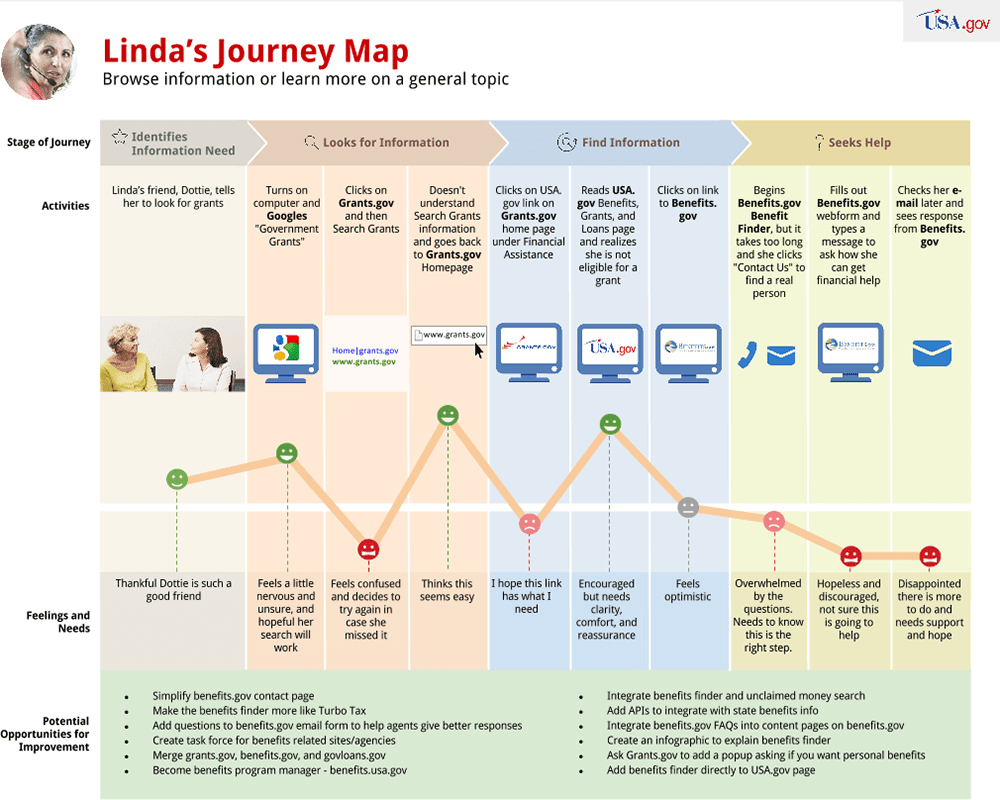
This map is very detailed. This may help you improve the customer journey because you focus one point of view: the buyer persona.
A successful benefits knows many benefits. Take a look at these stats
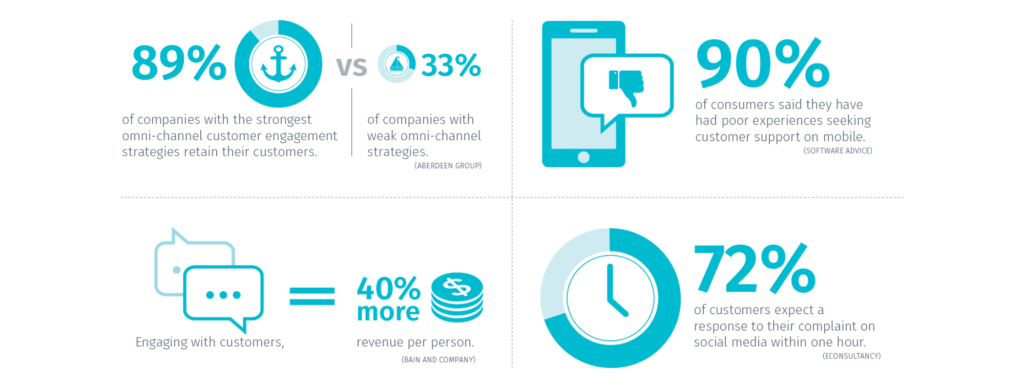
There is a reason why so many marketers spend more and more time to design a customer journey. Every sector becomes more competitive. If you want to stand out, you can’t do business without a (good) customer journey anymore.
Eventually it is all about how you treat your customers. You have to make sure that everything is ready for your customers to easily convert. This way they will enjoy the journey and keep coming for more.
The more time you spend on designing the customer journey, the better it becomes and the happier your customers will be.
The customer journey can make or break the success of your company. Do not forget this in your online marketing strategy!
Do you need help in setting up the customer journey?
Contact us!
Source: crazyegg.com
